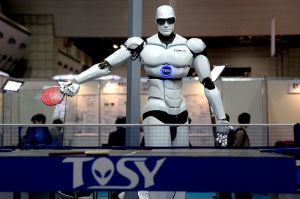Fifth Generation (Present and Beyond) Artificial Intelligence
The field was founded on the claim that a central property of humans, intelligence—the sapience of Homo sapiens—can be so precisely described that it can be simulated by a machine. This raises philosophical issues about the nature of the mind and the ethics of creating artificial beings, issues which have been addressed by myth, fiction and philosophy since antiquity. Artificial intelligence has been the subject of optimism, but has also suffered setbacks and, today, has become an essential part of the technology industry, providing the heavy lifting for many of the most difficult problems in computer science.
AI research is highly technical and specialized, deeply divided into subfields that often fail to communicate with each other. Subfields have grown up around particular institutions, the work of individual researchers, the solution of specific problems, longstanding differences of opinion about how AI should be done and the application of widely differing tools. The central problems of AI include such traits as reasoning, knowledge, planning, learning, communication, perception and the ability to move and manipulate objects. General intelligence (or “strong AI”) is still among the field’s long term goals.
Inventors of the Modern Computer (Konrad Zuse)
Inventors of the Modern Computer (John Atanasoff and Clifford Berry)
Inventors of the Modern Computer (Howard Aiken and Grace Hopper)
The History of the ENIAC Computer
The History of the UNIVAC Computer
History of Laptop Computers
Read other post about Computer History:
Inventors of the Modern Computer (Konrad Zuse)
Inventors of the Modern Computer (John Atanasoff and Clifford Berry)
Inventors of the Modern Computer (Howard Aiken and Grace Hopper)
The History of the ENIAC Computer
The History of the UNIVAC Computer
History of Laptop Computers
 Twitter
Twitter Facebook
Facebook Google+
Google+ Feeds
Feeds







































